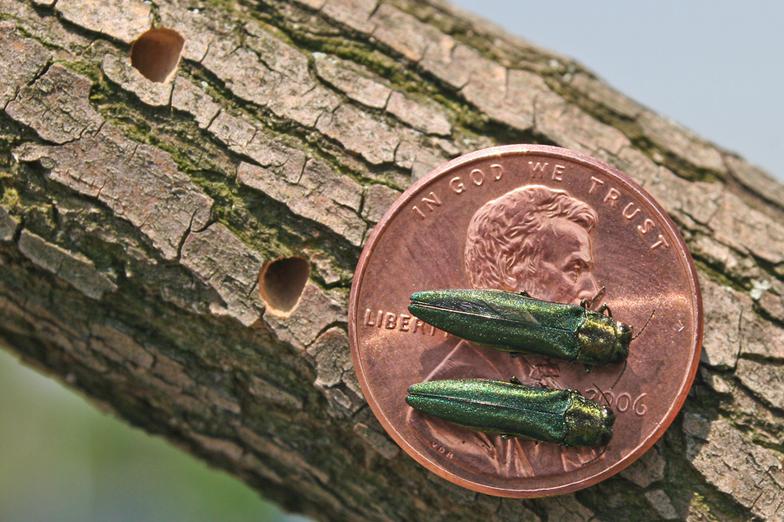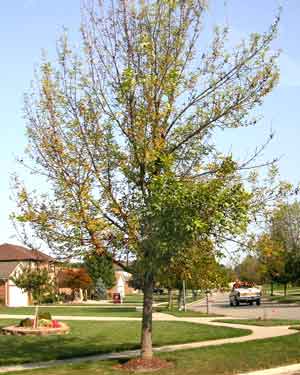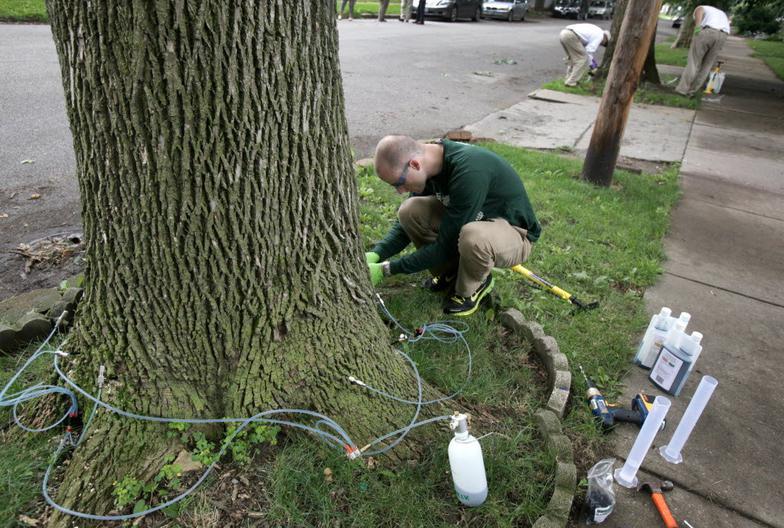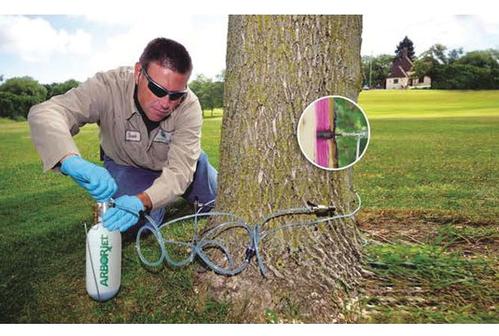Tree Services of Omaha - Omaha, Nebraska
Call Today For Your Free Estimate: 402-650-4773
Tree Services of Omaha proudly services: Omaha, Bellevue, Gretna, Ralston, Bennington, Millard, Elkhorn, La Vista, Papillion, Lincoln, Louisville, Ashland, Blair, Fort Calhoun, Council Bluffs Iowa.
Emerald Ash Borer - Omaha, Nebraska
We keep hearing it in the news and wonder when the Emerald Ash Borer will show up in our front or backyard Ash trees. Although it hasn’t arrived in Nebraska, it is on its way. As a community, we must be proactive about treating our trees or else we will see a catastrophic wipe out of the Ash tree species.
What is Emerald Ash Borer?
The Emerald Ash Borer is a small, wood-boring beetle that can mature to be about a half an inch long. The Emerald Ash Borer is native to Asia and is originally believe to be brought to the US through infected packing materials in the last 15 years. One key identifier of the borer is their metallic green color. The adult beetles will be present in the spring and can be found until mid August. The adult Emerald Ash Borers will exit the Ash tree through a “D’shaped” hole that can be up to an eighth of an inch. After the reproduction phase, the females will lay their eggs on the surface of the bark and the larvae will hatch in the summer. The larvae will then begin to tunnel into the the tree and feed on the phloem. The larvae will create S-shaped indentations under the bark, which prohibits the proper movement of water through the tree. As the larvae mate, they will hibernate over winter in the sapwood of the tree, pupate in April, and emerge as adults. This beetle is now considered the most destructive pest to be seen in the United States.
How is Emerald Ash Borer Spread?
Emerald Ash Borer adults can fly up to a half a mile from the tree that they emerged. Originally, the large spread of Emerald Ash Borer started in the nursery. Nurseries had moved infested trees to other areas, which helped spread the beetle. The beetle can also be spread through ash logs or any untreated lumber that still as the bark attached. The Emerald Ash Borer can move from tree to tree in a neighborhood, so it is important to know what type of tree you have so you can properly treat.
What does an infested tree look like?
One of the earliest signs of Emerald Ash Borer is the thinning of the tree’s canopy. As the Emerald Ash Borer invades, the borer begins to destroy the tissues needed to move water and nutrients throughout the tree. The lack of water and nutrients from the base to the branches, will cause the leaves to change color and promote dieback. A heavily infested tree can see up to half the tree die within the first year and dead within the second. Larger trees can be completely taken over in 3-4 years.
What are ways to prevent EAB before it arrives?
A variety of treatment options are available, to help control the infestation of Emerald Ash Borer. The common preventative methods include, trunk injections, soil treatments, and foliage sprays. These treatments are strongly recommended when the Emerald Ash Borer is detected within 15 miles of your home. All of the trunk injections treatments have been shown to be effective, but the results are directly correlated to the original condition of the tree. Healthier trees will respond more positively than weaker and more stressed out trees. One product that I have been using is Tree-age which contains an ingredient Emamectin Benzoate. Recent studies have show that this active ingredient will remain effective for 2-3 years, which is longer than most other pesticides (i.e. Imidacloprid). The Tree-age product is injected about 6-18 inches from the ground and into the base of the tree. It is applied through the Arborjet system, that uses pressure to inject the product into drilled holes on the bark. This is the only product that is effective when a tree is already infected with EAB.
There is no need to remove a healthy ash tree. I suggest contacting a Nebraska Arborists Association certified arborist to understand the best treatment option for diseased or dying trees.
Who do I call if I believe my tree has EAB?
If you think the Emerald Ash Borer has invaded your tree, please contact the Nebraska Department of Agriculture at 402-471-2351 or USDA APHIS at 402-896-8256.



